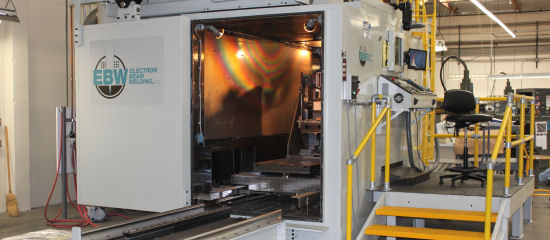Design Considerations - Electron Beam Welding
Minimal Heat Input leading to reduced distortion with electron beam welding
A major advantage of electron beam welding is the low total energy (heat) input. IMPORTANT - Low heat input is possible because electron beam weld penetration does not depend on the thermal conductivity of the material being welded. The focused electron beam results in a fusion zone of narrow cross section.Part distortion and stresses are at a minimum with electron beam welding.
Material flexibility and electron beam welding
The electron beam welding process can weld most types of metals. In addition, dissimilar metal combinations can be welded using the electron beam welding process.
Small/large and thick/thin capabilities of electron beam welding
The high energy of electron beam welding makes it possible to weld unusually thick metals--thicker than most other welding processes. Penetrations from .0025 inches up to 4 inches are possible (in steel).




